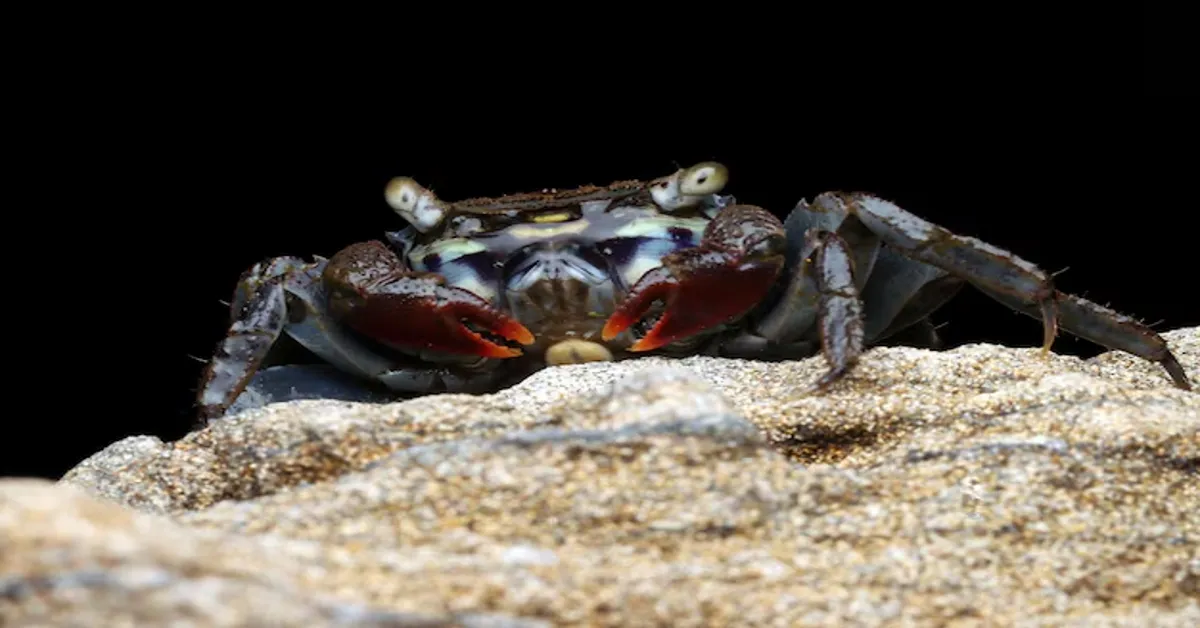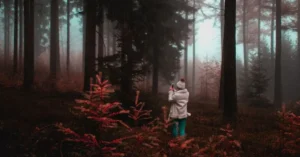When you think of lobsters, the classic red hue might come to mind. But lurking in the depths of our oceans is a rare spectacle that defies this norm: the blue lobster. These captivating crustaceans are not just another seafood delicacy; they embody mystery and allure in their vibrant azure shells. With an estimated occurrence rate of one in two million, blue lobsters hold a special place in marine biology and culinary intrigue alike. Join us as we dive deep into the world of these extraordinary creatures, exploring their unique characteristics and the reasons behind their fascinating rarity. Whether you’re a seafood enthusiast or simply curious about ocean life, you’ll discover why blue lobsters reign supreme among nature’s wonders.
About Blue Lobsters
Blue lobsters are a mesmerizing variant of the American lobster, scientifically known as Homarus americanus. Their striking blue color arises from a genetic mutation that affects their shell pigments. This captivating hue sets them apart from their more common red counterparts, making them a rare gem in the underwater world.
These crustaceans typically inhabit rocky ocean floors along the Atlantic Coast of North America. They thrive in cool waters, where they can hide among crevices and seaweed. Their habitat is crucial for survival, providing protection from predators while allowing easy access to food sources such as fish and mollusks.
Feeding primarily at night, blue lobsters display both scavenging and hunting behaviors. They have strong pincers that allow them to crack open hard-shelled prey with ease. Their diet plays an essential role in maintaining ecological balance in their habitats by controlling populations of other marine organisms.
While fascinating to observe, these unique creatures also face threats due to overfishing and environmental changes. Conservation efforts are vital not only for protecting the species but also for preserving biodiversity within our oceans.
Blue Lobster
The blue lobster is a captivating marvel of the ocean. With its striking, vibrant hue, it stands out among its more common counterparts. This rare color comes from a genetic mutation that affects the way light interacts with their shells, creating an eye-catching spectacle beneath the waves.
Unlike typical lobsters which boast dark shades of green or brown, blue lobsters are often sought after by seafood lovers and collectors alike. Their unique appearance makes them not only a feast for the eyes but also a symbol of rarity in marine life. In fact, scientists estimate that one in two million lobsters is born with this brilliant blue coloration.
Blue lobsters inhabit cold waters along North America’s Atlantic coast. They thrive in rocky crevices where they find shelter and food. These fascinating creatures can live up to 50 years if conditions permit.
Catching a glimpse of a blue lobster in its natural habitat offers an unforgettable experience for divers and fishermen alike. The allure extends beyond just their beauty; these crustaceans play an essential role in maintaining healthy marine ecosystems too.
Blue American Lobster
The blue American lobster is a striking variation of the common American lobster, known for its vivid azure hue. This unique coloration arises from a genetic mutation that affects the production of certain proteins in their shells. While most lobsters present with shades of brown or green, these vibrant blue specimens capture attention and intrigue.
Blue lobsters are not just visually stunning; they also possess many characteristics typical of their species. They can grow quite large, reaching up to 40 pounds and living over 50 years under ideal conditions. Found primarily along the Atlantic coast of North America, these creatures thrive in rocky ocean habitats where they find shelter and food.
Despite being intriguing members of marine life, blue lobsters are incredibly rare. Statistically speaking, the chances of encountering one are about 1 in 2 million. This rarity adds an allure to them among seafood enthusiasts and collectors alike.
Their unusual color has sparked curiosity beyond culinary interest; it invites discussions about genetics and biodiversity within marine ecosystems. Blue American lobsters remind us that nature often surprises us with its uniqueness.
Invertebrates Blue Lobster
Blue lobsters are a captivating example of the diversity found within invertebrates. These remarkable creatures belong to the family Nephropidae and are known for their striking blue coloration, which is attributed to a genetic variation that affects the production of pigments in their shells.
Unlike typical American lobsters, which usually display a dark green or brown hue, blue lobsters stand out vividly against the ocean floor. This unique color not only makes them visually stunning but also plays a role in their survival strategies. Their bright shells can camouflage among specific sea environments, helping them evade predators while hunting for food.
In terms of size, blue lobsters can grow as large as standard lobsters—sometimes reaching weights of up to 20 pounds or more. They share similar habitats with other lobster species and thrive in cold waters along North America’s Atlantic coast.
Despite their beauty and intrigue, blue lobsters remain quite rare. It is estimated that one out of every two million lobsters exhibits this extraordinary coloring. As such, they continue to be an object of fascination both for scientists and seafood enthusiasts alike.
Additional Details
The blue lobster, a captivating marine creature, stands out due to its unique coloration. This striking hue is caused by a genetic mutation that affects the production of certain proteins in their shells. The vibrant blue shade not only fascinates researchers and seafood lovers but also sparks curiosity about their lifestyle and habitat.
These lobsters are primarily found along the North Atlantic coast, particularly in colder waters like those off Maine. Their preference for rocky crevices provides them with protection from predators and harsh environmental conditions. Blue lobsters thrive in these habitats, showcasing an incredible adaptability that adds to their allure.
Despite being rare compared to typical red lobsters, sightings of blue specimens have been increasing over recent years. They represent approximately one in every two million lobsters caught commercially. This rarity makes them a subject of interest for conservationists who study their population dynamics within the ecosystem.
Their unique beauty has led some fishermen to treat them with special care upon catching them. Many believe releasing these exquisite creatures back into the ocean allows future generations to appreciate this remarkable species even more.
Rare Blue Lobster
Rare blue lobsters are a marvel of nature, capturing the imagination of marine enthusiasts and chefs alike. These unique creatures possess a stunning cobalt hue caused by a genetic mutation that affects their shell pigmentation. While lobster aficionados may be familiar with traditional colors, encountering a blue lobster is akin to discovering treasure beneath the waves.
The rarity of blue lobsters adds to their allure. Statistically speaking, they occur in one out of every two million lobsters caught. This striking blue coloration sets them apart in both aquatic environments and culinary presentations. Chefs often showcase these rare finds as symbols of luxury on exclusive menus.
Their intriguing beauty doesn’t just attract attention; it also raises questions about biodiversity and conservation efforts within marine ecosystems. Spotting a rare blue lobster can spark discussions about habitat protection and sustainable fishing practices, making them not only fascinating but significant for ecological awareness too.
With their extraordinary appearance and limited occurrences, rare blue lobsters continue to inspire awe among those who encounter them or learn about their existence through stories shared across communities passionate about ocean life.
Customer Reviews
Customer reviews for blue lobsters are nothing short of enthusiastic. Many seafood lovers express awe at the unique color and rarity of these marine creatures. Their vibrant hue makes them a stunning centerpiece on any dining table, turning an ordinary meal into an extraordinary experience.
Culinary enthusiasts rave about the sweet, delicate flavor that blue lobsters offer. Some say it’s richer than traditional varieties, making every bite memorable. From upscale restaurants to home kitchens, chefs enjoy experimenting with this rare ingredient in various dishes.
Aquarium owners often share their joy of keeping blue lobsters as pets. The striking appearance combined with interesting behavior captivates observers. Enthusiasts appreciate how these creatures become conversation starters among guests.
The rarity factor also adds to the excitement surrounding blue lobsters. Many customers note that spotting one is akin to finding treasure in the ocean’s depths—a delightful surprise that brings joy and fascination alike. This mix of beauty, taste, and uniqueness creates a buzz among those who encounter or dine on this remarkable crustacean.
Feedback
The fascination with blue lobsters goes beyond their stunning appearance. These remarkable creatures inspire conversations, curiosity, and admiration among marine enthusiasts and casual observers alike. Whether you’ve encountered a blue lobster in person or through documentaries, the intrigue remains strong.
Many seafood lovers have shared their experiences when spotting these rare beauties at local markets or during fishing trips. Their vibrant color often sparks questions about where they come from and how genetically unique they are compared to their more common counterparts.
From chefs who boast about serving this delicacy to ocean advocates working tirelessly to protect marine life, the feedback on blue lobsters is overwhelmingly positive. They serve as a reminder of nature’s wonders and complexities while encouraging further exploration into ocean conservation.
Your thoughts matter! If you’ve had an encounter with a blue lobster or would like to share your views on its significance within our oceans, we’d love to hear from you. The world of blue lobsters continues to captivate many hearts—let’s keep that conversation going!









